Published on: March 6, 2024
AI Performance Optimization: The Secret Weapon Your Competitors Don’t Want You to Know About
Author: Lauren Smith

Einstein’s secret weapon wasn’t his historic E=mc² equation. It was his little-known, unpretentious pencil. In the vast world of Artificial Intelligence, a similar underdog quietly exists.
Picture an Olympic sprinter; every muscle honed to perfection, their mindset, adrenaline pumping. Now, imagine them running in lead shoes. Sounds ridiculous, right? That’s exactly how your AI algorithm feels without proper optimization, akin to a sprinter tethered down with the manifestation of poor programming practices.
The downfall of many firms isn’t their lack of large training data sets or sophisticated algorithms, but the overlooked detail of AI performance optimization. This is your secret weapon, your competitive edge waiting to be harnessed, the graphite core in your metaphorical pencil. Let’s embark on a journey to uncover the art and science of this hidden game-changer.
Unleashing the power of AI-driven performance optimization
- AI-driven Performance Optimization is a powerful tool that can significantly enhance business operations.
- Real-world applications of AI offer practical insights into its potential.
- Effectively implementing AI-driven performance optimization can be achieved with a step-by-step approach.
Understanding AI-driven performance optimization: What it is and how it works
AI-driven performance optimization is becoming the go-to tool for businesses in the relentless pursuit of operational excellence. Its role is fundamental: AI focuses on analyzing data, identifies patterns, detects anomalies, predicts future trends, and suggests ways to improve performance. It acts like a sharp-eyed overseer who never sleeps, constantly refining processes and streamlining operations to achieve better results.
Super-powered by machine learning, natural language processing, predictive analytics, and image recognition, AI-driven performance optimization moves beyond traditional methods, dynamically adjusting performance and configuration parameters to align with real-time demands. It’s the efficient taskmaster that every business needs – one that thrives on complex and often unstructured data, deciphers it, and uses the knowledge gained to propel businesses forward.
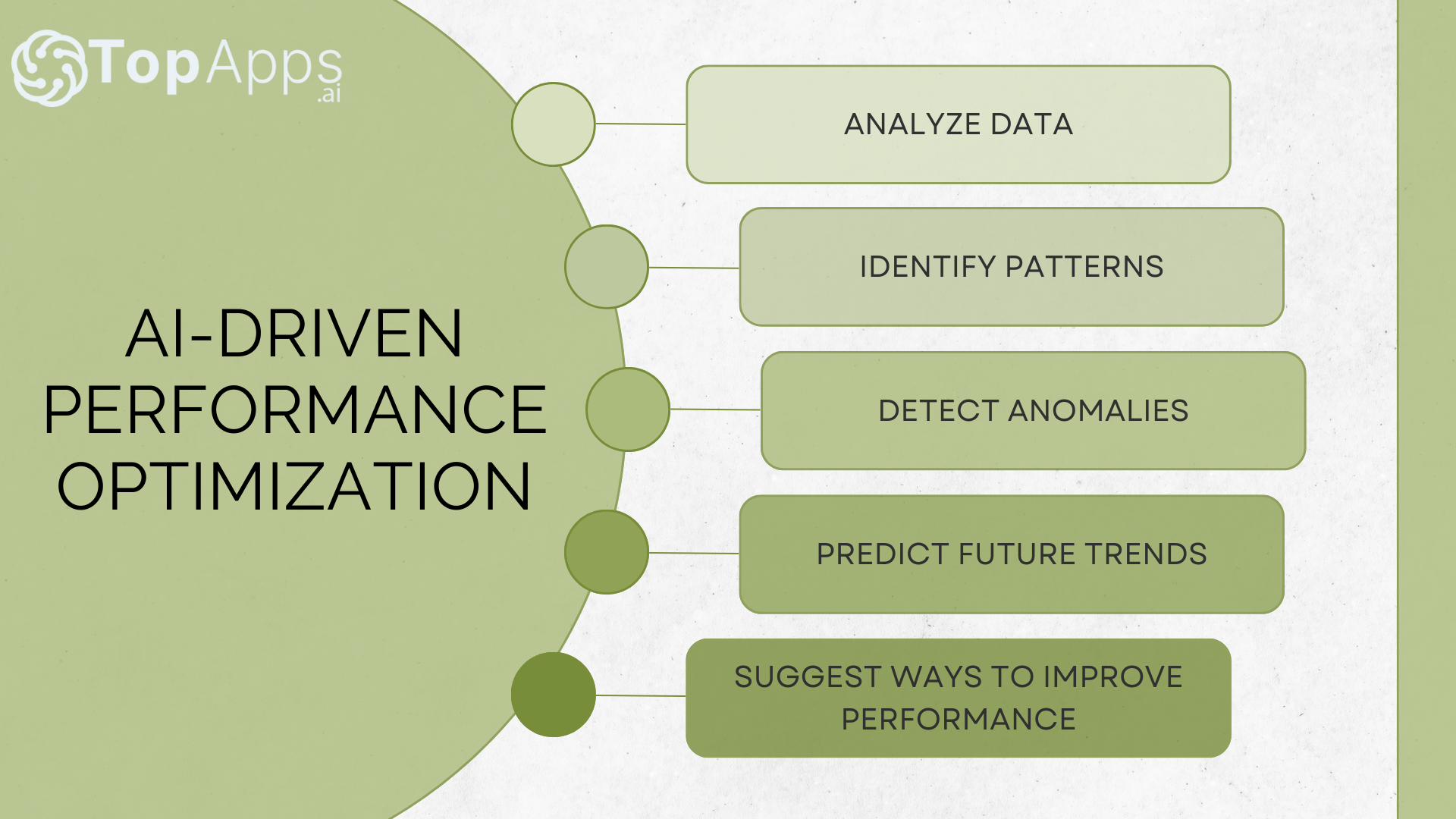
The role of AI in optimizing business performance: Real-world examples
AI-enabled systems are revolutionizing diverse industries globally. In healthcare, AI-driven performance optimization helps hospitals allocate resources more efficiently – greatly improving patient outcomes. In retail, AI-powered recommendation systems boost sales by providing nuanced consumer insights and an enhanced user experience. In logistics, AI aids in route optimization, reducing costs and improving delivery times.
AI’s potential to optimize business performance and the tasks of performance engineers is far from theoretical – it’s a reality. These real-world examples consolidate the case for implementing AI-driven performance optimization, demonstrating its ability to propel businesses towards operational excellence and surpassing competitors.
Step-by-step guide to implementing AI-driven performance optimization
Implementing AI-driven optimization isn’t just a technical challenge. It involves a strategic commitment to embracing a data-driven culture and investing in the right skills and technology to enhance the optimization process.
- Establish clear objectives: Define what aspects of your business could benefit from optimization. Be they operations, customer service, or sales, having clear targets helps set the direction for AI development.
- Assemble a competent team: Building and maintaining AI models requires expertise in data science. Assemble a team that understands your business as well as performance engineering and can work with machine learning tools.
- Invest in technology: Enterprise-grade AI platforms can automate data processing, model training, and results interpretation. Find a platform that fits your needs and budget.
- Develop and train your AI model: Using historical representative data, build models that can predict future patterns. Train these on a variety of scenarios to ensure their robustness.
- Interpret Results and Apply Changes: Review the model accuracy and model performance. Understand what the model’s results mean for your business and apply changes based on its recommendations.
Implementing AI-driven optimization is a journey, not a one-off project. As your system learns and your business evolves, continue refining your models to extract maximum value.
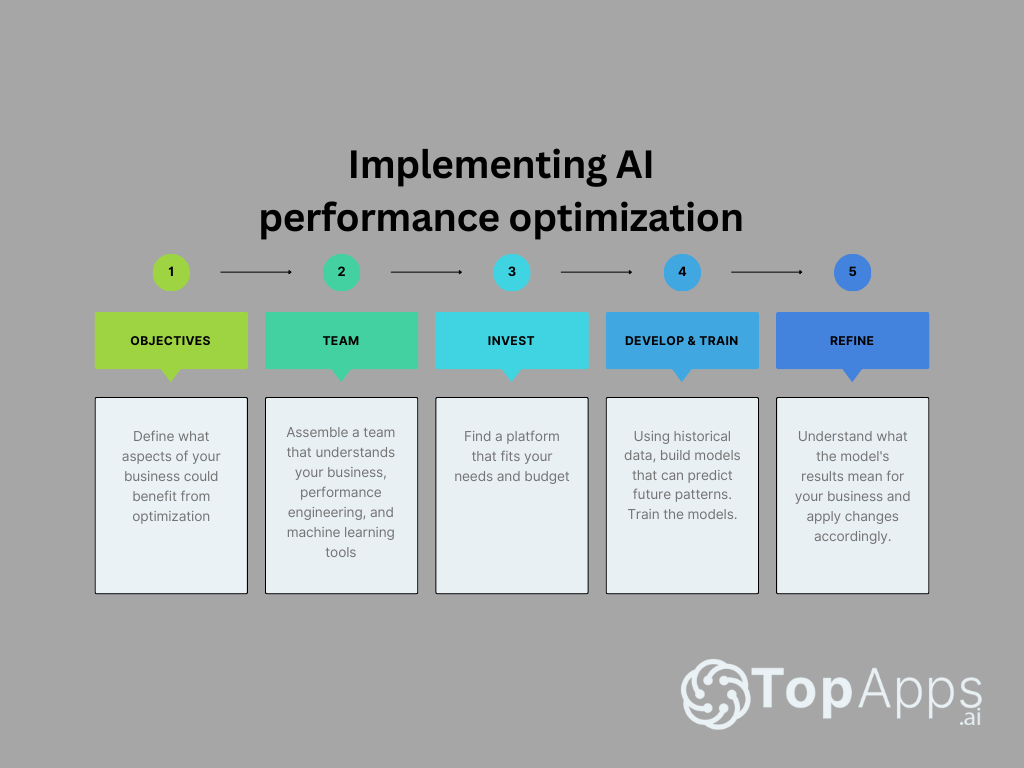
Harnessing AI optimization tools for enhanced performance
- Introducing top AI optimization tools in the market
- Framework for choosing the ideal AI optimization tool for your business
Overview of popular AI optimization tools in the market
AI and machine learning continue to transform various sectors, boosting efficiency and delivering unprecedented business growth. One way businesses can capitalize on these transformative technologies is through AI optimization tools. Gaining traction in markets worldwide, these tools offer functionalities like predictive analytics, demand forecasting, and advanced pattern identification.
Some top-performing AI optimization tools include Google’s AI Platform, IBM’s Watson, Microsoft’s Azure Machine Learning, and Amazon’s Sagemaker. Each tool offers an array of features and unique selling propositions that could be applicable across different sectors. For example, Watson’s strength lies in its natural language processing and understanding capabilities and its ability to train models quickly, while Google’s AI Platform emphasizes its cost-effectiveness supported by Google’s expansive cloud infrastructure.
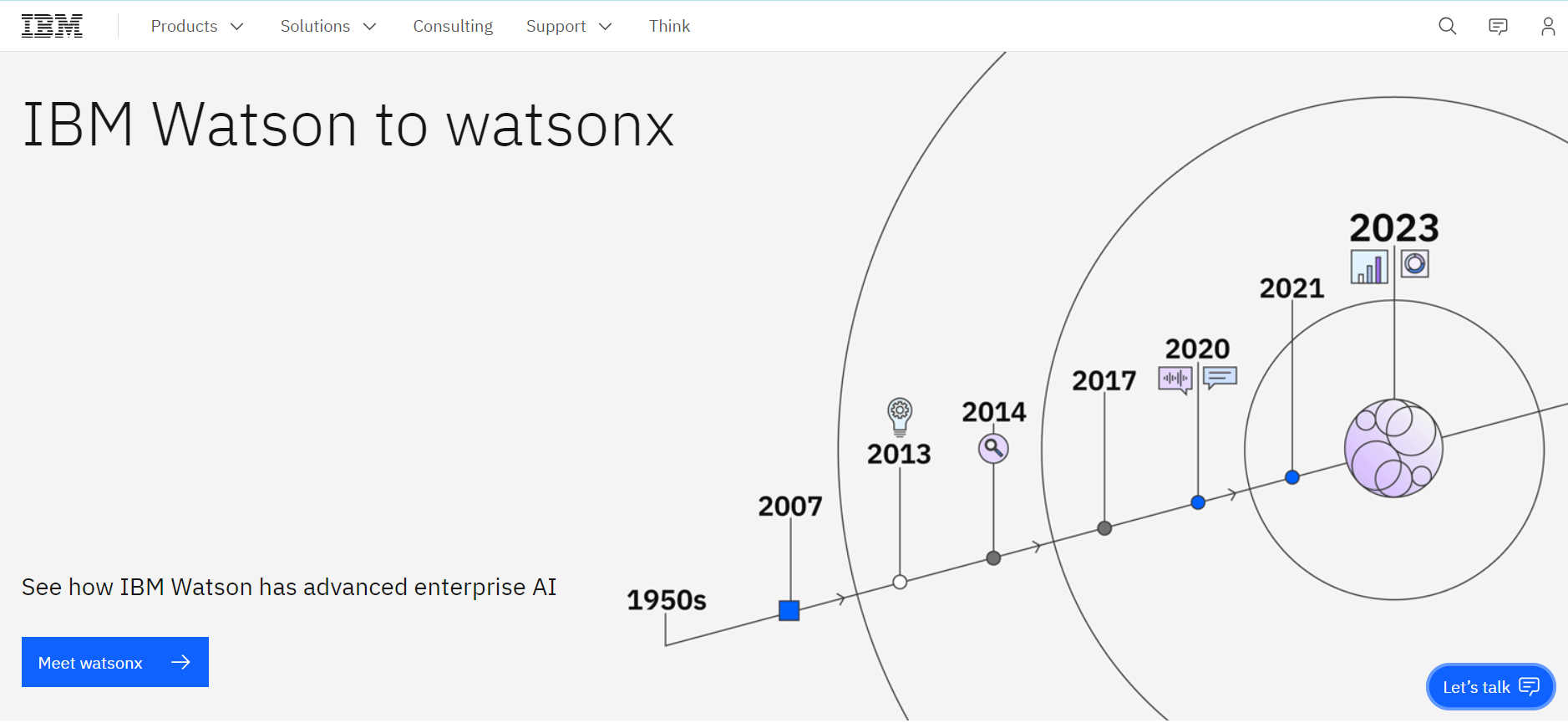
How to choose the right AI optimization tool for your business
Knowing what’s available in the market is just the first step, the real challenge lies in pinpointing the right AI optimization tool for your business. Here are the key considerations:
- Understand your business needs: An in-depth understanding of your business requirements ensures you pick a tool with capabilities that meet your unique needs. This might involve alignment with your business strategy and goals, and the nature of data you deal with.
- Factor in the costs: While premium AI tools come with extensive features, they may also come with hefty price tags. Examine the cost and weigh it against the potential benefits to ensure a good return on investment.
- Accessibility and usability: An AI tool that requires an expert to operate might present a challenge for businesses that lack such skill sets. Consider a tool that is user-friendly and requires minimal technical expertise to handle.
Case study: Successful implementation of AI optimization tools
United Parcel Service (UPS), a global leader in logistics, has effectively utilized AI optimization tools to enhance its delivery operations, reduce costs, and improve customer satisfaction. With millions of parcels delivered daily worldwide, UPS faces complex logistical challenges, including route optimization, package sorting efficiency, and predictive maintenance of its fleet.
Implementation of AI optimization:
- ORION (On-Road Integrated Optimization and Navigation): UPS implemented ORION, an AI-powered tool, to optimize delivery routes. ORION analyzes numerous potential routes for delivery trucks, considering factors like traffic, weather, and delivery time windows. By calculating the most efficient routes, ORION helps drivers reduce miles driven and save fuel.
- Network Planning Tools (NPT): UPS uses AI to streamline its package sorting process. NPT assists in determining the most efficient paths for packages through UPS’s vast logistics network, from pickup to delivery. This ensures timely deliveries and reduces bottlenecks.
- Predictive maintenance: AI algorithms analyze data from UPS vehicles to predict maintenance issues before they lead to breakdowns. This proactive approach minimizes downtime and extends the lifespan of the fleet.

Outcomes:
- Reduced operational costs: By optimizing delivery routes, UPS has significantly reduced its fuel consumption, reportedly saving millions of gallons of fuel annually. This not only lowers operational costs but also contributes to the company’s sustainability goals.
- Improved efficiency: The implementation of AI-driven tools like ORION and NPT has enhanced the efficiency of UPS’s delivery operations, allowing for faster and more reliable service. This has led to increased customer satisfaction and loyalty.
- Enhanced fleet management: Predictive maintenance has reduced vehicle downtime and maintenance costs, so the UPS fleet remains reliable to reduce the chance of delivery delays.
AI for asset performance optimization: A game changer
- AI techniques in asset management are revolutionizing the way businesses operate.
- The implementation of AI can provide significant benefits in asset performance optimization.
- An effective AI integration strategy paves the way for greater efficiency and profitability.
The role of AI in asset optimization
AI takes center stage in managing business assets, leading the way toward improved efficiency and cost management. Instead of traditional methods that rely on human effort, AI can systematically analyze large volumes of data, identify patterns, and provide actionable insights for efficient asset utilization. This not only saves valuable time and resources but also elevates performance to an entirely new level.
Large equipment and infrastructures integrated with AI can self-monitor, diagnose, and predict potential maintenance needs even before they occur. This preemptive approach prevents costly downtime, increases operational longevity, and ensures seamless performance.
Unlocking the benefits of AI in asset performance optimization
One in 2 companies reportedly experience an increase in profitability after incorporating AI into their asset management strategy. With predictive analytics and machine learning algorithms, AI can optimize asset usage, hence reducing wastage and unnecessary expenses.
AI also bestows businesses with enhanced risk management capabilities. It can accurately predict failure risks in real-time, allowing for prompt action and avoidance of costly reparations. The increased reliability leads to more confident decision-making and bigger strides towards ambitious business goals.
AI enables customization of asset management, adjusting strategies to fit specific operational dynamics, and therefore, boosting efficiency.

Practical integration of AI in your asset management strategy
Transitioning to AI-powered asset management may seem intimidating, but a strategic approach can make the process smoother. Begin by evaluating current asset performance metrics: Are there frequent breakdowns? Is the operational cost more than anticipated? If the answer to such questions is affirmative, AI could be your solution.
Invest in AI platforms boasting transparent services and excellent customer support. They should be capable of foreseeing potential problems and helping you customize solutions to your business needs.
The AI systems should supplement your workforce, not substitute it. Organize training programs and equip your employees with the necessary skills to leverage AI. This will ensure that technological advancements support human effort rather than replace it for efficient asset management.
AI in code optimization: The future of software development
- AI’s influence is dramatically changing code optimization.
- The software development process is being revolutionized by AI.
- A real-world example of AI in code optimization at its best.
The impact of AI on code optimization
Software developers have traditionally spent countless hours debugging and optimizing code – that is, until AI intervened. The application of AI in code optimization is quickly transforming the way software is developed and improved. Its algorithms can evaluate and enhance the performance of a program, making it more efficient without human intervention. Moreover, AI can identify patterns in codebases, offering unprecedented insights into a program’s inefficiencies and suggesting necessary improvements.
As more technological advancements unfold, AI-led code optimization will no doubt become an essential part of software development, resulting in marked productivity and efficiency gains.

How AI is revolutionizing the software development process
Now, consider the broader implications. Think about the development process itself. As we mentioned earlier, AI can undergo analytical sprints long before humans even start their first coffee of the day. Its ability to scour massive amounts of data quickly allows it to point out potential issues and help developers correct them.
The result? Significantly reduced debugging time, more immediate software updates, and a faster go-to-market process. AI not only augments the work of seasoned developers, but it also empowers those with less experience to operate beyond their capabilities.
Case study: AI in code optimization in action
Let’s look at some figures. Take the instance of Bayou, an AI-based tool developed by Rice University with support from the DARPA. Bayou utilizes a method known as neural sketch learning to sort through colossal amounts of data. In practical terms, it means that developers simply type in their requirements, and Bayou generates a host of Java-based code snippets fitting the user’s request.
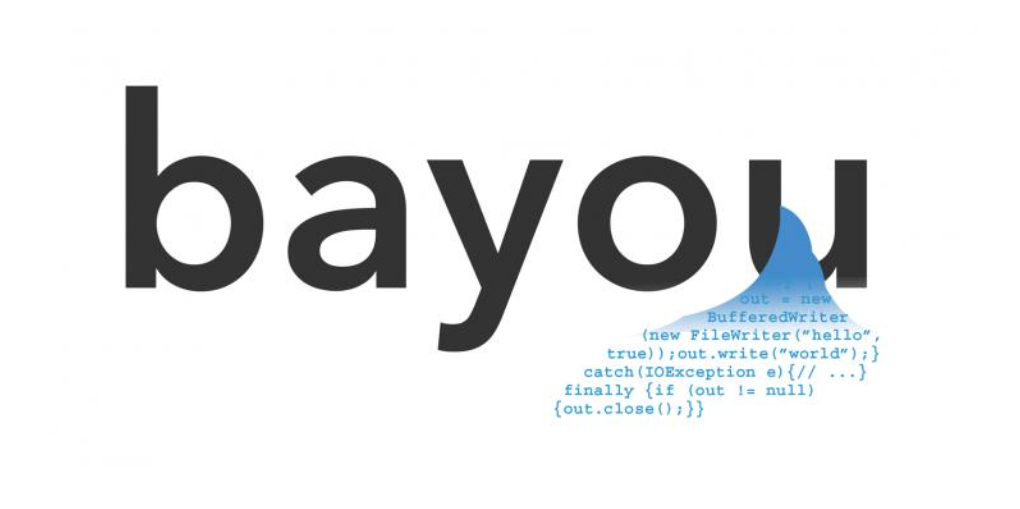
Seeing the AI system in real-world applications effectively strengthens the argument for their use. So, as the world of AI continues to evolve, the outlook for developers and companies alike becomes progressively more intriguing, and superior software becomes more accessible than ever before.
We’ve seen the power of AI working to optimize assets and software development; now, imagine the potential when we take AI performance beyond the realm of improvement alone. In the words of Alan Kay, “The best way to predict the future is to invent it.” AI, it seems, is doing just that in software development.
AI redefining performance: Beyond improvement
- Harnessing AI’s transformative potential across industries.
- Evolving strategies for performance optimization with AI.
- Discover future trends on how AI will continue to redefine performance; pushing boundaries.
How AI is redefining performance in various industries
Artificial intelligence is rewriting the script for business performance across a ton of industries, overhauling traditional methods in favor of faster, more efficient solutions.
For instance, the healthcare sector is leveraging AI for precise diagnosis and predictive patient care, reducing the workload on medical personnel and increasing patient satisfaction. The retail sector, on the other hand, experiences enhanced customer service with AI-directed personalized recommendations fostering a more intimate buying experience.
Equally noteworthy is AI’s significant impact on logistics and supply chain management, where real-time analytics enable informed decision-making, driving seamless operations.
The transformative potential of AI
AI demonstrates impressive potential to reshape how businesses approach and measure performance. Traditional metrics are steadily being replaced by real-time insights and predictive analytics, due to the implementation of AI.
The key differentiator is AI’s capacity to analyze vast amounts of data swiftly and accurately, resulting in well-informed strategy planning, peak model performance, and expert execution. This propels businesses to optimize performance at a level unmatched by human ability alone.
AI deployment also facilitates a proactive approach to performance optimization rather than the reactive stance that was the norm. This proactive approach ensures continuous improvement, reinforcing a growth mindset within organizations.
Future trends: How AI will continue to redefine performance
As AI technologies continue to mature, they will undoubtedly influence the way businesses gauge performance in the long run. The rise of autonomous decision-making systems, driven by AI, will enable organizations to adapt rapidly to dynamic business environments and customer demands.
Additionally, the growing emphasis on AI ethics will likely shape performance metrics, taking into account fair practices and transparency. This will create a future where AI-based performance optimization not only delivers growth but also promotes equitable, responsible business practices that resonate with all stakeholders.
Underlining all these trends is the overarching impulse towards hyper-personalized experiences – be it for customers, employees, or partners. AI’s capacity to deliver these personalized experiences at scale will undoubtedly set the performance benchmarks for the future.
The momentum behind AI is relentless. As businesses navigate this landscape, unlocking AI’s potential will serve as a competitive advantage. Such is the transformative impact of AI on performance – it is not just about improvement anymore; it is about redefining new, previously unimagined possibilities for performance excellence.
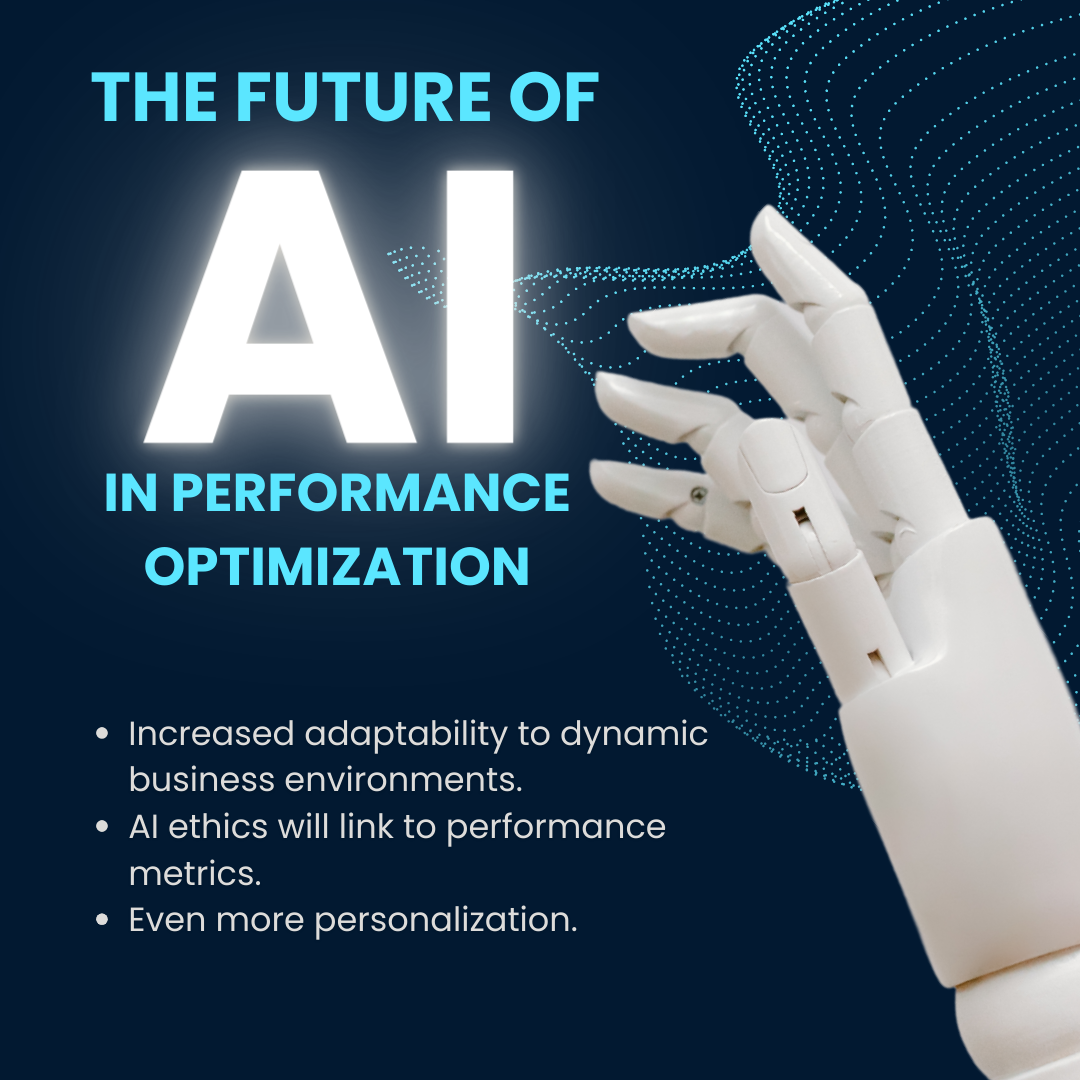
Riding the AI performance highway
Smart use of AI’s performance optimization abilities is a game-changer. It’s about equipping your business with cutting-edge technologies. It’s about using AI to craft superior strategies that leave your competitors in the dust.
You now know the value of directing your resources toward sharpening your AI tools. Your business stands a chance to not only speed past its competitors but also to stay ahead, riding the wave of AI-driven success.
Don’t wait another minute, start incorporating these golden nuggets into your business strategy. Scale up your AI capabilities, invest in the tools you need, and stay ahead of the curve.
How will you put your newfound insights on AI optimization to use and outmaneuver the competition in your market?
Remember, the road to success is always under construction. Stay ahead, one AI-optimized step at a time.
Lauren Smith
TopApps writer
Recent Articles

Artificial Intelligence (AI) is everywhere, but for many, it remains a mystery. What exactly is AI, and how does it impact our daily...
Read More
In 2024, adaptive AI assistants are revolutionizing how we interact with technology. These intelligent agents learn from your habits, preferences, and context to...
Read More
Struggling to keep up with the competition in 2025? You’re not alone. Small and medium enterprises (SMEs) are facing a rapidly evolving business...
Read More